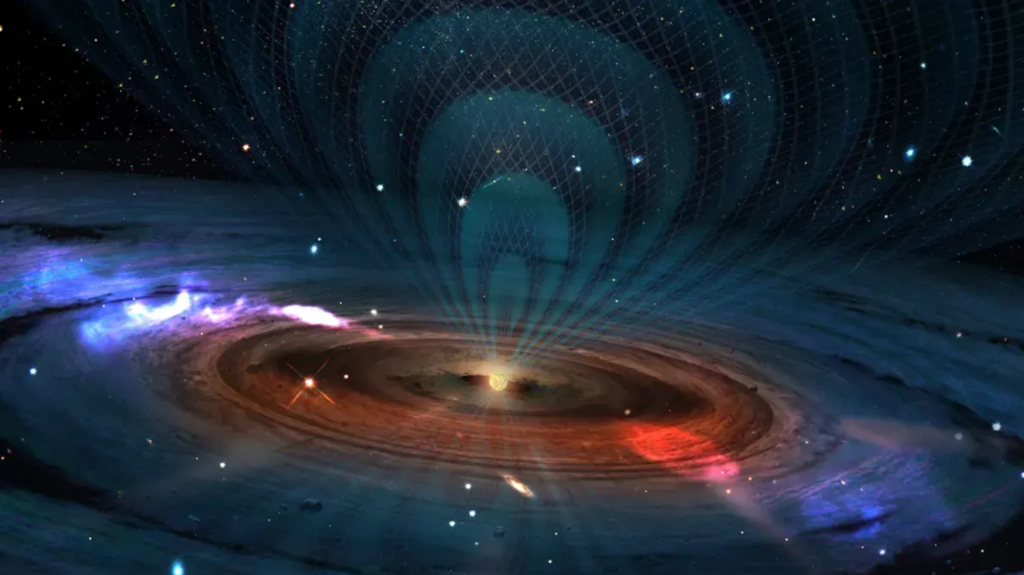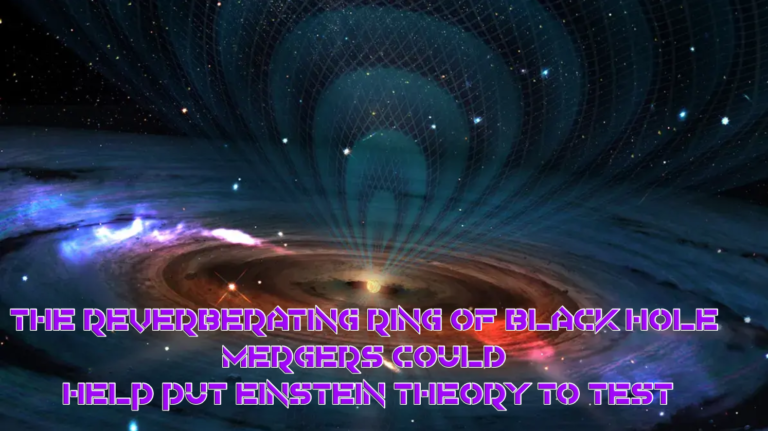Examining the Resonating Halo of Black Hole Mergers: A Potential Test for Einstein’s Theory
In pursuit of a unified theory of quantum gravity, scientists have sought to reconcile Einstein’s general theory of relativity with the realm of quantum mechanics. To advance towards this ambitious goal, scientists are compelled to continually scrutinize the theory of relativity.

Presently, two recently published papers authored by scientists from Caltech elucidate a pathway to enhance our understanding of black hole structures and the gravitational waves they emit. By delving deeper into these intricate phenomena, we edge closer to attaining the coveted pinnacle of scientific theories.
Listening to the ring of a black hole
The objective of the Caltech scientists is to examine observations of black holes in order to detect subtle deviations from general relativity that could provide indications of the existence of quantum gravity.
The research papers, which have been published in Physical Review X and Physical Review Letters, concentrate on the resonating rings formed during the merger of black holes. These rings are distinct from the familiar accretion discs surrounding black holes and instead resemble the sonorous vibrations produced when two black holes collide.
Yanbei Chen, a physics professor at Caltech and a co-author of both studies, explained in a press statement, “When two black holes combine to form a larger black hole, the resultant black hole vibrates like a resonating bell. If certain theories of quantum gravity hold true, the quality of this ringing, known as its timbre, may deviate from the predictions of general relativity. Our methodologies are designed to detect disparities in the characteristics of this ringdown phase, such as variations in harmonics and overtones.”
The initial paper among the pair introduces a novel equation that encompasses the resonating behavior of black holes based on specific quantum gravity theories. This research builds upon an equation formulated by Saul Teukolsky at Caltech half a century ago, which greatly simplified the comprehension of the impact of black holes on the geometry of spacetime.
Dongjun Li, a graduate student and co-lead author of the paper, explained, “To accurately simulate the merger of black holes and solve all the Einstein equations, one must rely on supercomputers. Numerical relativity methods play a crucial role in precisely simulating black hole mergers and serve as a vital foundation for interpreting LIGO data. However, it is exceedingly challenging for physicists to gain direct insights from numerical results. The Teukolsky equation grants us an intuitive understanding of the occurrences during the ringdown phase.”
He further added, “Our newly developed equation enables us to model and comprehend the propagation of gravitational waves around black holes that exhibit more exotic characteristics than those predicted by Einstein.”
Detecting signals related to quantum gravity
The second paper, on the other hand, outlines a technique that applies Dongjun’s equation to the gravitational wave data obtained from the Laser Interferometric Gravitational-Wave Observatory (LIGO), which recently commenced its fourth observation run.
This novel approach employs filters to eliminate the features of black hole ringing predicted by general relativity. By doing so, the scientists anticipate detecting subtle signatures that are linked to quantum gravity.
Dongjun expressed his initial concern, stating, “I was initially apprehensive that the signatures predicted by my equation would be overshadowed by the numerous overtones and harmonics. Fortunately, Sizheng’s filters are capable of eliminating all these known features, enabling us to focus solely on the differences.”
Chen further remarked, “By combining the discoveries of Li and Ma, we can significantly enhance our community’s capacity to explore the intricacies of gravity.”
Do not forget to share your opinion with us to provide you with the best posts !




0 Comments